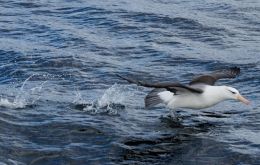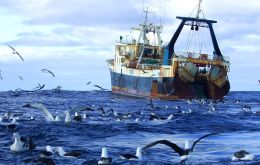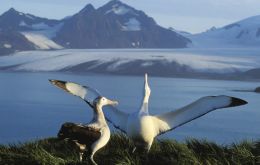MercoPress. South Atlantic News Agency
Tag: Albatrosses
-
Monday, June 28th 2021 - 09:00 UTC
Drones to census Falklands Albatrosses and Rockhopper penguins

The implementation of drones to monitor large seabird colonies can be as effective as traditional on-the-ground methods while reducing costs, labour, and the risk of human error, a new study has found.
-
Thursday, November 19th 2020 - 09:30 UTC
Fishermen cut beaks off albatrosses in south-west Atlantic fisheries

A new study has documented a harrowing but increasingly prevalent trend, in which fishermen cut the bills off live albatrosses in order to free them from hooks. Once this barbaric procedure has been performed, trawlermen throw the endangered seabirds back into the ocean to die.
-
Saturday, February 1st 2020 - 08:45 UTC
How we recruited albatrosses to patrol the high seas for illegal fishers

By Samantha Patrick (*) – Wandering albatrosses have long been considered exceptional creatures. They can fly 8.5 million kilometers during their lifetimes – the equivalent of flying to the Moon and back more than ten times. Their three-and-a-half-meter wing span is the same length as a small car and they can weigh as much as 24 puffins. Their body shape means they can effortlessly glide over the ocean waves, flying in some of the strongest winds on Earth. Now research led by the Centre d'études biologiques de Chizé in France has found that these seabirds may have promising careers in the fight against overfishing.
-
Tuesday, January 22nd 2019 - 09:45 UTC
Albatrosses ‘Bird-borne’ radar project to enhance UK Overseas Territories environment

Seventeen innovative new projects will receive UK Government funding through the Darwin Plus initiative, to help protect and enhance the environment in the UK Overseas Territories. The seventh round of funding under the initiative, worth around £3.75m, will be shared amongst 17 projects around the globe. The funding will support international nature and help to achieve many of the commitments in the UK Government’s 25 Year Environment Plan.
